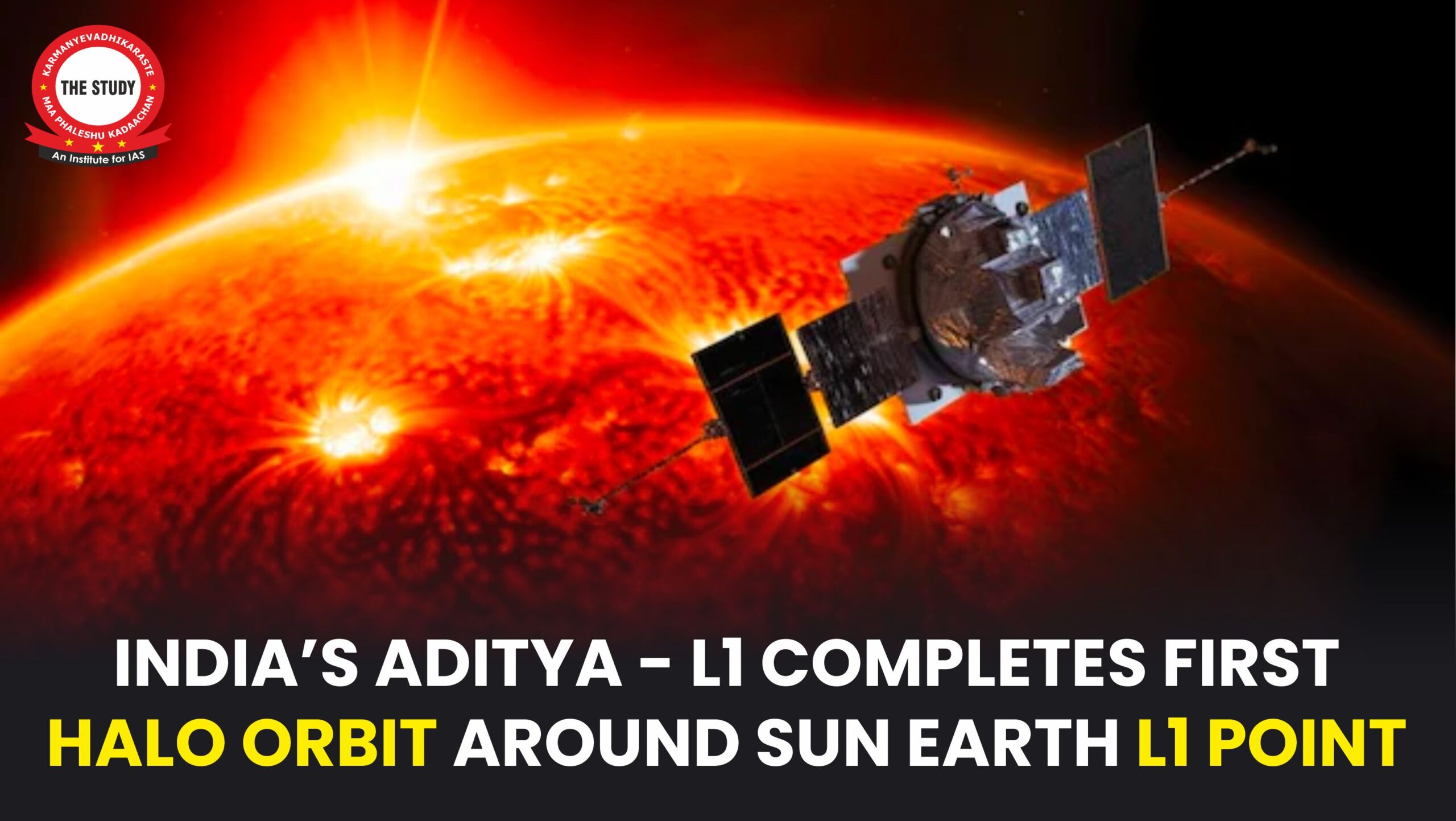India’s Aditya-L1 Completes First Halo Orbit Around Sun-Earth L1 Point
Context:
ISRO announced a significant milestone for India’s first solar mission, Aditya-L1, as it completed its first halo orbit around the Sun-Earth L1 point.
The spacecraft, launched on September 2, 2023, achieved insertion into its initial halo orbit on January 6, 2024.
〈 L1, which lies between the Sun and Earth. This unique location allows it to observe the Sun continuously without Earth’s interference. 〉
Aditya-L1 Mission

About Halo Orbit:
- It is a three-dimensional, periodic orbit around Lagrange points in a two-body system like Earth-Sun or Earth-Moon.
- It is commonly linked with L1, L2, and L3 Lagrange points, where the gravitational forces of two large bodies and centrifugal force balance each other.
- The spacecraft’s halo orbit takes 178 days to complete one revolution around the L1 point.
- During this journey, perturbing forces (such as gravitational interactions) can cause the spacecraft to deviate from its intended path.

|
Lagrange Points
|
Benefits of placing Aditya-L1 in a halo orbit around the L1 point are:
- Ensuring a mission lifetime of 5 years: It is selected to minimise station-keeping manoeuvres and fuel consumption, thus extending the mission life.
- A satellite in a halo orbit around L1 has the major advantage of continuously viewing the Sun without any occultation or eclipses.
- It provides an unobstructed view of the Sun crucial for studying the solar atmosphere, including the photosphere, chromosphere, and corona.
The orbit provides a stable line of sight to Earth and the Sun, which is beneficial for continuous communication and solar power.





